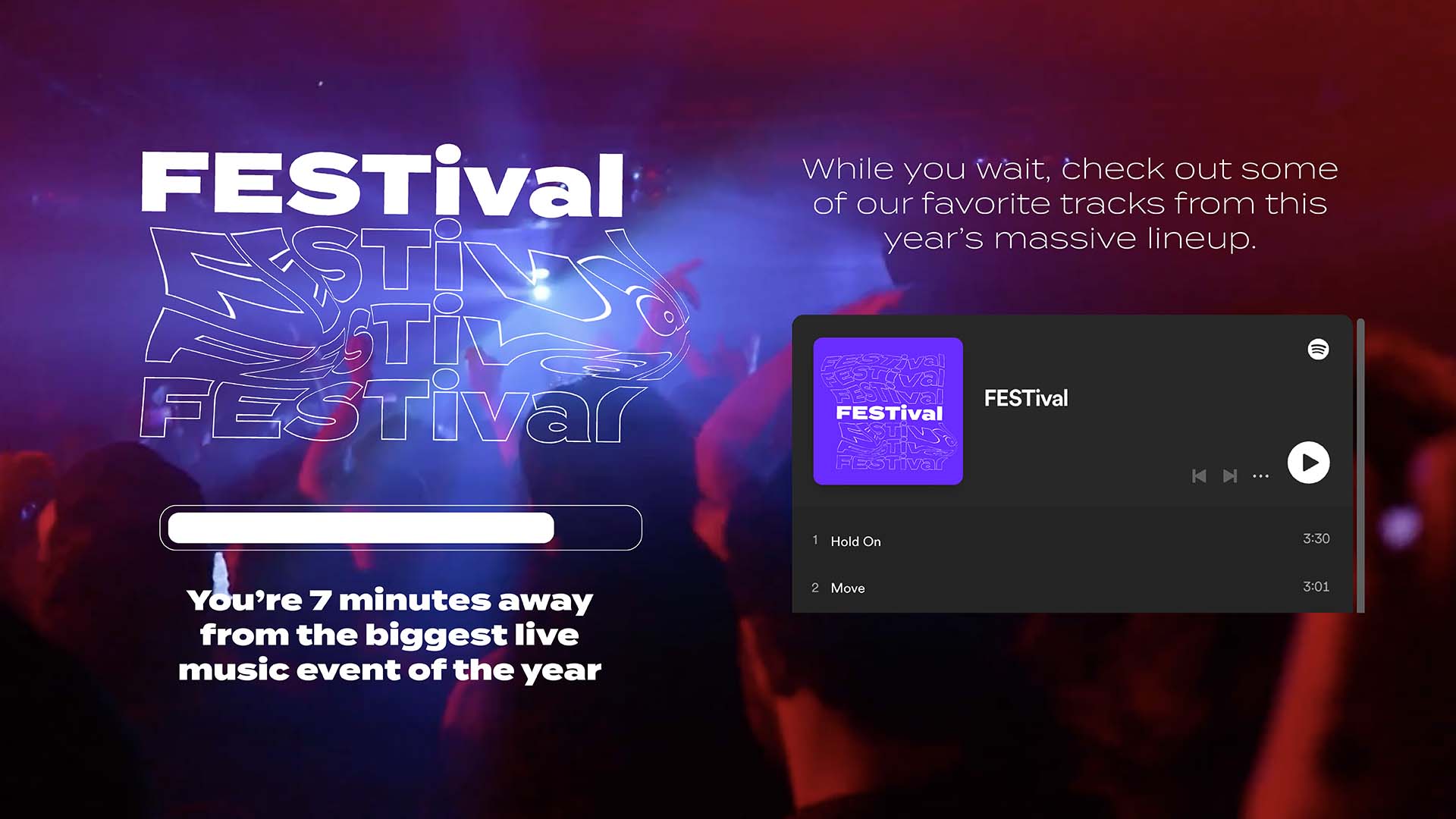Internet traffic management: how to control your website traffic

What is internet traffic management? How does web traffic control work? And how do major organizations across industries use traffic management solutions to handle high demand, ensure a fair and reliable online experience, and block bots and resellers? Find out in this comprehensive guide to online traffic management.
Table of contents
Internet traffic management describes tools that monitor and control the flow of online traffic to websites and apps to prevent load-induced issues like crashes, slowdowns, and errors. Just like air traffic control ensures the safe and orderly flow of aircraft through airspaces and in and out of airports, website traffic control ensures the safe and orderly flow of visitors to websites and mobile apps.
Internet traffic management software keeps websites online and ensures fairness by managing traffic to web servers in high-demand scenarios like concert ticket sales, sneaker drops, and government registrations.
Have you ever been on a website or app that slows down, bugs out, or crashes during a big event? Or seen a headline like “Thousands left disappointed & empty-handed after company’s website crashed”?

Internet traffic management solutions prevent the frustration, reputational damage, and lost sales that come from website crashes. They’re used by companies like Ticketmaster, The North Face, and Zalando to keep their sites online and give every visitor a smooth, fair, and informed experience like the one shown in the example below.

While some internet traffic management solutions are just holding pages that refresh and give customers site access at random, sophisticated web traffic control software like Queue-it offer a range of features to ensure fairness, keep you informed, and give you flexibility to queue your way. These include:
- Fair first-in, first-out queuing
- Your position in line
- Your progress through the queue
- Your estimated wait time
- The ability to get an email notification when it’s your turn
- The ability to transfer your queue position between devices without losing your spot
The frontend of internet traffic management systems (what your site visitors see) are these fully customizable, dynamic waiting room pages. If you’re placed in one, you’ll typically experience a short wait. Then, when it’s your turn, the system will automatically redirect you from the waiting room to the webpage or app you were trying to access.
RELATED: Virtual Waiting Room Buyer's Guide: How to Choose Your Virtual Queue System
Internet traffic management software works by automatically redirecting site visitors to a waiting room (or online queue) when they perform an action the website owner needs to protect—such as visiting a particular page or adding items to cart—or when traffic surges to levels that could crash the site or impact performance.
With a simple HTTP 302 redirect, visitors get seamlessly flowed from the target site or page to a customized waiting room where they get detailed information on their wait time, position in queue, and progress.
When it’s the visitors’ turn, they’re flowed back to the website or app with a token that lets them use it without restriction.
The frontend of internet traffic management tools (the waiting room page) typically look like the website the visitor is trying to access, both in style and URL. But while waiting, the visitor is actually on the internet traffic management provider’s infrastructure, which ensures they place no strain on the target website’s servers.
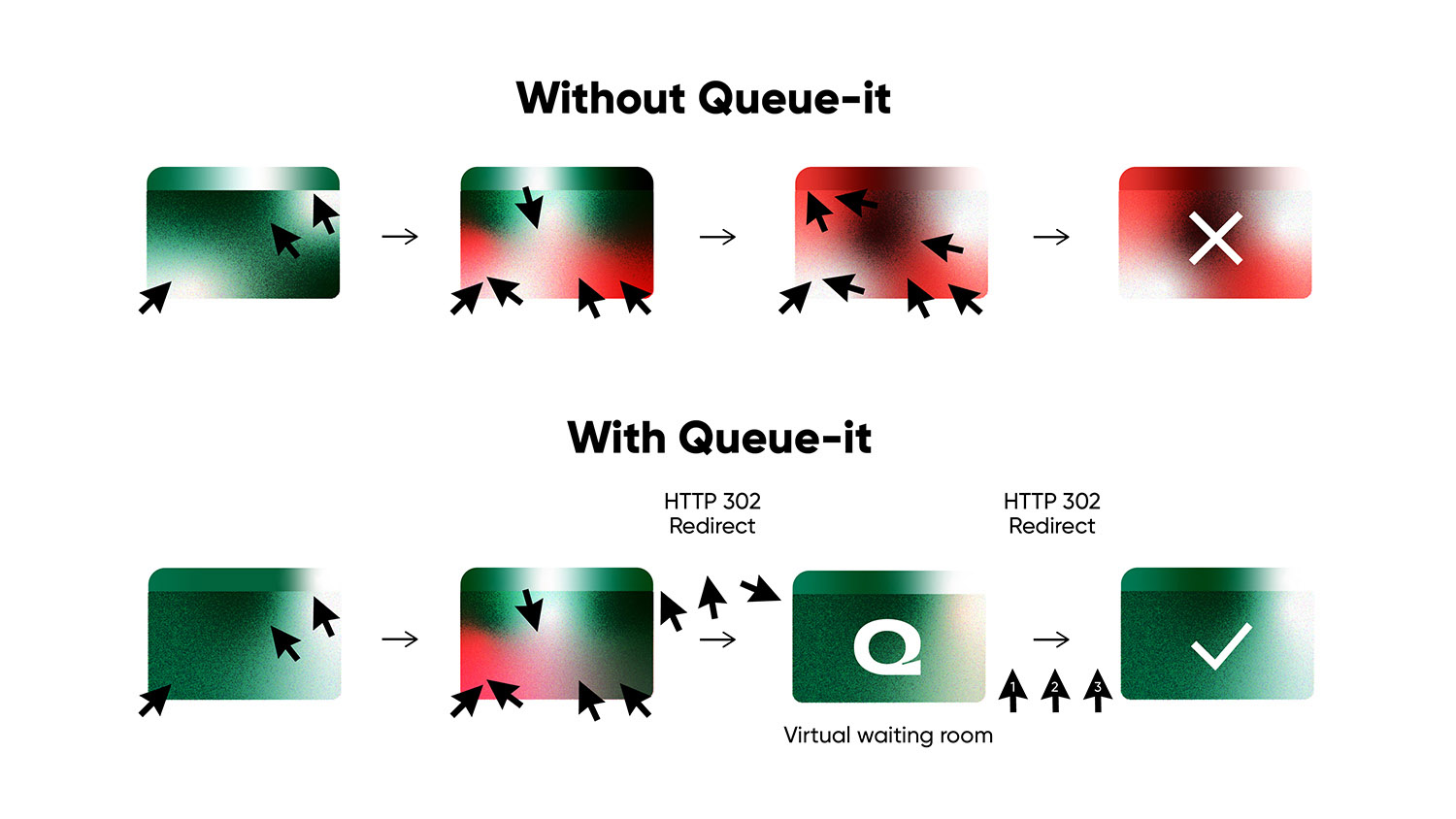
With internet traffic management software, you can control the traffic flow in real time, sending visitors to your site at exactly the rate you choose—whether that’s 100, 1,000, or 10,000 visitors per minute. This outflow from queue to website can be adjusted on the fly to ensure the website operates at its maximum capacity without impacting performance.
To illustrate how a web traffic control solution works, let’s look at a typical high-demand scenario like a limited-edition sneaker drop:
- The sneaker retailer knows their site can handle up to 1,000 new visitors to their site each minute, but they’re expecting more visitors than that for this sneaker drop
- They set up the internet traffic management tool and configure it to send visitors to their site at a rate of 1,000 visitors per minute
- When the sneaker drop goes live, 10,000 visitors rush to the site in the first two minutes
- Instead of these visitors crashing the site, they’re redirected to the sneaker site’s queue, where they get flowed to the site at the 1,000 per minute rate set by the company
- Visitors get access in fair order, and those waiting can see their spot in line, their progress, and how long they’ll have to wait
- Within 10 minutes, all 10,000 of these visitors have gotten access to the site
- The company stays online, sells all their sneakers with no issues, and gives every customer a smooth and fair experience
"The huge server infrastructure mess was something we did not want to continue with. Nobody builds a website to handle hundreds of thousands of people just for a limited amount of time ... Queue-it is a great solution that saves the day and it works flawlessly."
Robert Williams, Digital Manager

The first step to controlling traffic with a internet traffic management solution is to integrate it. You can do this via client-side, server-side, or edge connectors, typically in less than a day.
Once you’ve set up the solution, you can create a waiting room to control your online traffic in a matter of minutes. You simply:
- Choose the website, page, bottleneck or action you want to protect
- Choose your waiting room type (we’ll cover this below)
- Choose your max outflow of visitors from waiting room to website
- Activate your waiting room
- Monitor your event and adjust max outflow as needed
You can use internet traffic management tools like Queue-it to control traffic in three distinct ways, depending on your use case and needs:
- 24/7 protection: To control unexpected traffic peaks, the solution monitors traffic 24/7 and only activates when visitors exceed a set threshold. The waiting room kicks in automatically and flows visitors to the site at a controlled rate in first-in, first-out order, de-activating automatically when visitor levels normalize.
- Scheduled events: For planned events or limited-inventory sales, you can set up the waiting room to proactively collect all incoming traffic to your website or a specific sale page. All early visitors get gathered on a page with a timer counting down to the sale start. When the timer hits zero, they’re randomized to ensure fairness, then flowed to the site in their randomly assigned order. Late visitors get access in first-in, first-out order.
- Exclusive events: For exclusive members’ sales or events, you can use the waiting room to ensure only the visitors you choose get access. The invite-only waiting room enables you to reward loyal customers with truly exclusive access by sending unique single-use links or using two-factor authentication to verify all incoming visitors to your website or a sales page
The carousel below shows the three stages of the user journey when a website traffic control tool is used for a scheduled event, in this case, a festival ticket sale.
Customers see a page with a countdown timer, then a virtual queue with detailed wait info, then they’re flowed to your site to make their purchase.
Online traffic management gets used when demand is high and there’s a need to fairly allocate products.
This scenario occurs across a wide variety of organizations across industries and use cases, including:
- SNIPES during hyped sneaker drops
- Peach Aviation during airline ticket flash sales
- London School of Economics during class registrations
- StubHub during major K-pop ticket sales
- Currys during Holiday Season sales
- The North Face during exclusive product drops
- Bend Parks and Recreation during recreation activity registrations
- Telenor during iPhone launches
Let’s take a closer look at real-world examples of how an airline, a government department, and an ecommerce retailer use Queue-it’s web-based traffic management system to ensure optimal performance, no matter the demand.
Peach Aviation is Japan’s oldest low-cost carrier, operating 25 domestic routes and 12 international routes, serving over 50 million passengers every year.
When COVID travel restrictions eased, Peach ran sales campaigns to encourage passengers to take to the skies once more. These sales were a huge success, but the large traffic they attracted caused major website issues. “It wasn’t a good experience,” says Atsumi Murakami, Peach’s Chief of Innovation. “We received many complaints on social media.”
As a brand committed to customer experience, the Peach team quickly decided to implement Queue-it as an internet traffic management solution for their next big event—their 11th anniversary sale.
When Peach’s 11th anniversary event went live, their traffic spiked immediately. It peaked at over 4,000 new visitors per minute (shown by the green line in the chart below). But the waiting room controlled this spike, ensuring a maximum of 1,000 new visitors got access to the sale per minute (red line in chart below).
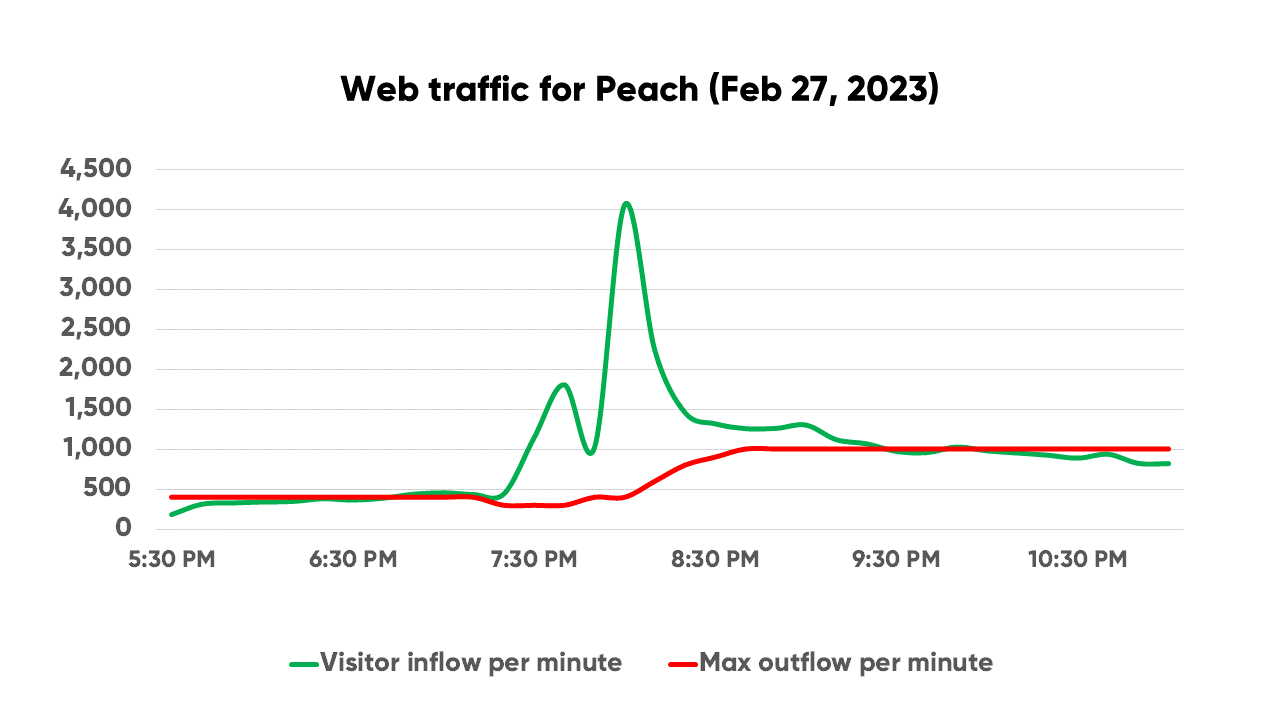
Across the week-long sale, the waiting room processed over 2 million customers.
Despite the enormous traffic, Murakami says, the sale was a resounding success. Peach sold thousands of tickets, customers got great deals, and the site ran smoothly and reliably through massive demand. “If it was not for the waiting room, we wouldn’t have been able to deliver the same result.”
“Before Queue-it, traffic peaks caused a lot of stress for us. We worried the server would crash, and even if it didn’t, we knew it would impact our ability to deliver a good user experience. But with the virtual waiting room in place, we feel protected ... There’s a huge change in our state of mind.”
Atsumi Murakami, Chief of Innovation

When the New Hampshire Department of Information Technology (DoIT) initially launched vaccination registrations to citizens, “it just wasn’t a good citizen service experience,” says Denis Goulet, New Hampshire’s State CIO. “People were having trouble with the system. We had partial transactions, data issues, and a not-so-elegant throttling system. Call center traffic skyrocketed.”
These issues incited immediate and immense pressure from both citizens and the media to get the next round of registrations right—which is why Goulet and his team implemented Queue-it.
New Hampshire’s DoIT knew their site could handle up to 1,000 visitors arriving per minute. What they didn’t know was when (or if) traffic would exceed this threshold. The team set up Queue-it’s virtual waiting room to monitor traffic to the registration page 24/7, and only activate if traffic exceeded 1,000 visitors per minute.
When traffic exceeded this amount, instead of the site crashing, visitors were automatically redirected to a customized waiting room. They experienced a short wait, then were flowed straight back to the website to register for their vaccinations in fair, first-come, first-served order.
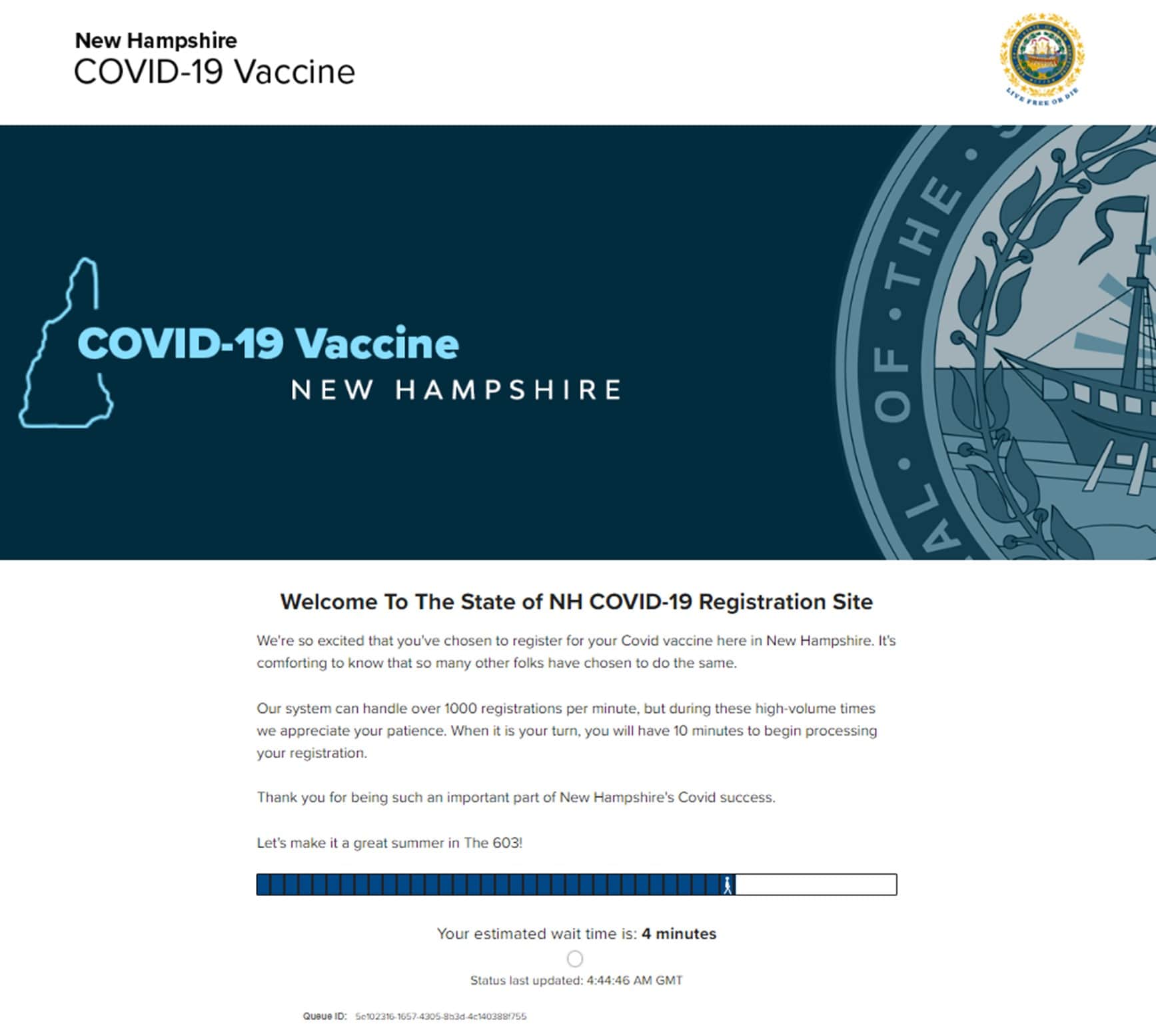
As the chart below shows, web traffic remained mostly below the threshold the site could handle, but it was unpredictable. At around midnight on April 2nd, traffic suddenly spiked to over 1,500 visitors per minute. With Queue-it in place, the waiting room activated automatically, protecting the site and ensuring a seamless service experience for citizens.

“I can count on one hand the number of times in my career I've implemented a new technology and it exceeded my expectations. Queue-it is one of those times, both in how easy it is to implement, and in how well it works.”
DENIS GOULET, NEW HAMPSHIRE STATE CIO

Danish ecommerce company Bedre Nætter used the invite-only waiting room on Black Friday to ensure early access for members, drive member sign-ups, and keep their site online through huge traffic spikes.
Ahead of their big sale, the Bedre Nætter team set up two waiting rooms, one for members and one for the general public. Each queue had a timer counting down to the minute the sale would go live—with the members-only queue slated to start hours earlier than the general access queue.
To encourage more member sign-ups, Bedre Nætter put an email field on the general access queue explaining that by joining the VIP program, customers would get access to Black Friday deals hours before the general public.
One in every four visitors who viewed this page joined Bedre Nætter’s loyalty program.
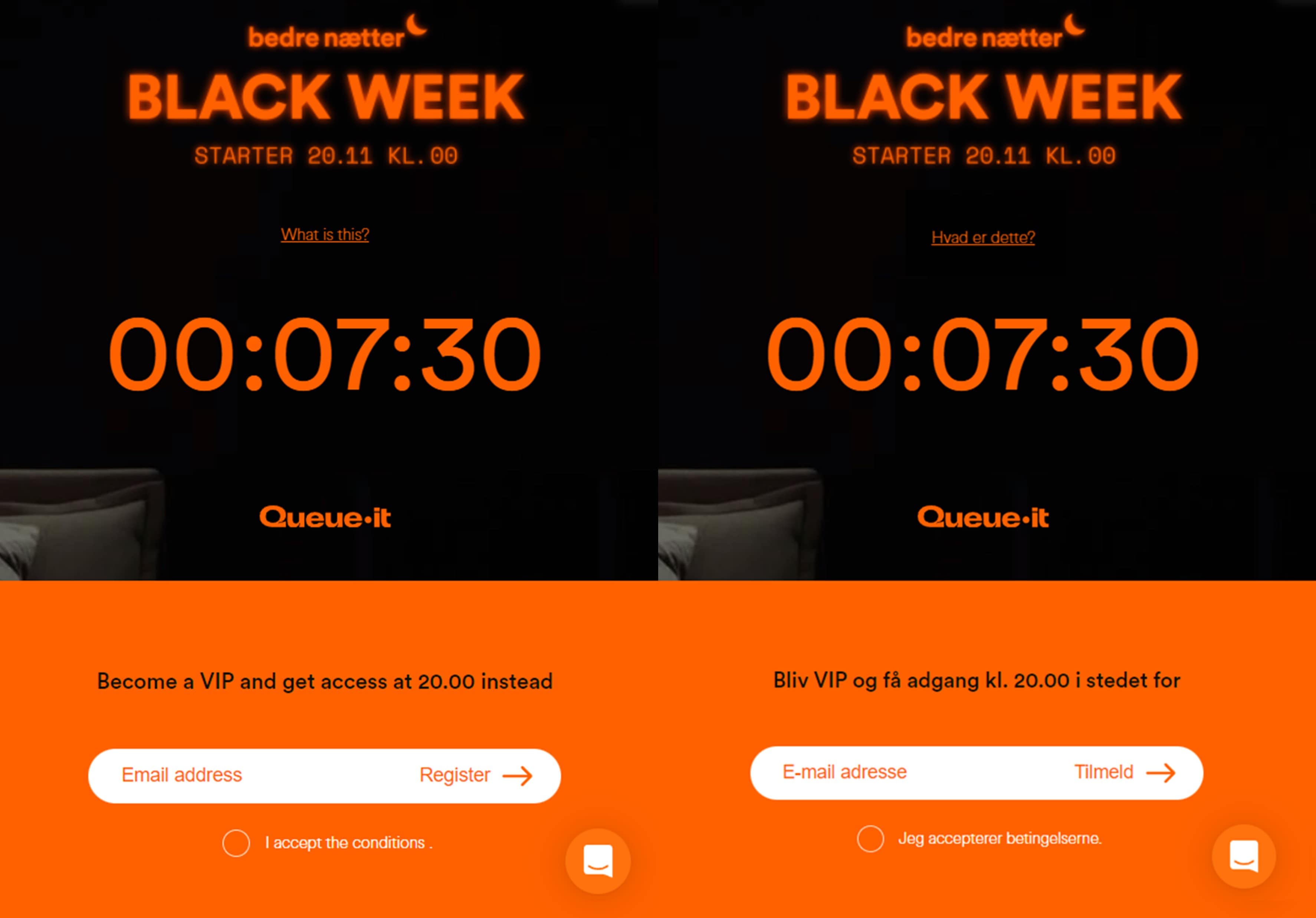
Bedre Nætter's pre-queue countdown timer with sign-up form for early access in translated English (left) and original Danish (right)
When the sale went live, the invite-only queue flowed members to Bedre Nætter’s site at the exact rate it could handle. The team closely monitored the traffic, and only opened access for the general public once they saw all members had their chance to make their purchases.
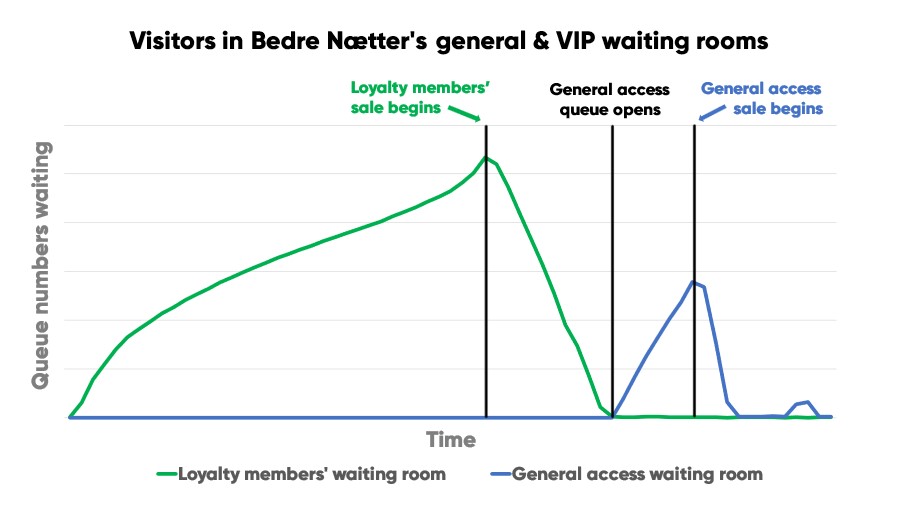
With the help of the Queue-it, Bedre Nætter achieved:
- 100% uptime, ensuring ROI on ad spend and effort spend creating demand
- 25% email capture rate in exchange for exclusive access (2,500 emails)
- 11 minutes to hit sales target
“All the members that came through the invite-only queue had a very high conversion rate. We hit our sales target for the night in the first 11 minutes. In just three hours, we hit the sales target for the whole week.”
MARCUS FORSBERG, HEAD OF ECOMMERCE & PERFORMANCE

You might be wondering why these big websites can’t just scale to handle the traffic. Why do they need to use internet traffic management to control the flow of customers?
Companies do scale for peak events. But at scale, every system breaks.
There is no “too big to fail” in the world of websites. Amazon, Walmart, Apple, the IRS—surging web traffic has taken all of them offline.
For a large online event, you’ll need to scale your systems to handle as many visitors as possible. But scaling is expensive, complex, and risky. Here’s why:
- Expensive: When you don’t know how many visitors will show up, you have to scale to handle the upper limits of your estimations to keep your site online. When these visitors show up in random patterns and spikes, you must keep your site scaled for peak load for the duration of an event. The costs of this overprovisioning add up fast. Plus, most sites are optimized for their usual load, so re-architecting your site to handle occasional peak demand creates system inefficiencies.
- Complex: While scaling your servers on the cloud may be relatively easy, getting each distinct component of your tech stack to scale—either automatically or manually—is a difficult, expensive, and sometimes impossible task. You may have to go through the lengthy and pricey process of re-architecting systems and upgrading subscription levels with third-party providers.
- Risky: Estimating traffic levels is difficult, making pre-scaling a risky strategy. Scaling automatically also introduces risk, because autoscaling takes time to react to traffic spikes. Plus, even if these approaches could handle sudden surges in traffic, bottlenecks almost always emerge. This means traffic still overloads areas that are difficult or impossible to scale, such as databases, inventory management systems, third-party features like payment gateways, and performance-intensive features like dynamic search or a “recommended for you” panel.
RELATED: 3 Autoscaling Challenges & How To Overcome Them With Online Traffic Management
Internet traffic management controls what scaling can’t: the flow of online visitors.
It complements scaling, allowing you to proactively protect your site against sudden spikes, safeguard key bottlenecks, and ensure scaling costs don’t get out of control. And as a bolt-on tool, internet traffic management software doesn’t require you to re-architect systems for high-traffic events that only occur a few times a year.
“Autoscaling doesn’t always react fast enough to ensure we stay online. Plus, it’s very expensive to autoscale every time there’s high traffic. If we did this for every traffic spike, it would cost more than double what we pay for Queue-it. So Queue-it was just the better approach, both in terms of reliability and cost.”
MIJAIL PAZ, HEAD OF TECHNOLOGY
The key feature of internet traffic management is the control it gives you. This control extends not only to the flow of traffic, but also to the customer experience, your team’s productivity, and your scaling costs.
Internet traffic management ensures peak demand doesn’t threaten your customer experience. One in three customers will leave a brand they love after just one bad experience. Without online traffic management, surges in traffic can:
- Crash your site or app
- Slowdown your site or app
- Overheat key bottlenecks, causing issues like overselling or payment gateway failure
- Allow bots and resellers to snatch product from genuine customers
Internet traffic management gives you the confidence and control avoid these issues and ensure every site visitor gets a smooth, fast, and seamless online experience.
RELATED: Your Digital Billboard: 12 Ways To Use Your Online Queue As a Marketing Asset
That’s why in a recent survey of customers using Queue-it:
- 84% said their customers’ online experience improved
- 69% saw fewer customer complaints for sales/registrations
- 85% said their sales are fairer with Queue-it
“Now, when our customers access our launches, they can trust us to handle the traffic. They can trust our site to be fast. They can trust our launches to be fair. Queue-it creates an overall professional experience that works exactly as advertised.”
Chris Pirrotta, VP of Digital experience

Big events place big strain on both your tech and your team. The prep-work to get your site ready for a surge in traffic can be enormous. But you also need on-call staff during the event, to act fast if anything goes wrong. And if something does go wrong, teams can spend hours or even days frantically working to get the site back online, restore data, and resolve issues.
By empowering you to control your traffic, internet traffic management tools make large-scale events more efficient and less stressful:
- Reduces prep work for large-scale online events by limiting the need to test, scale, and optimize or re-architect systems
- Increases operational efficiency by avoiding issues like overselling and errors in the customer journey, which strain support teams
- Improves employee efficiency by enabling commercial teams to run large-scale events without complete reliance on technical teams
- Provides expertise and support by giving you access to Queue-it’s team of peak traffic experts—who’ve been on hand with some of the world’s biggest companies on their busiest days
Internet traffic management lets your business teams execute their big ideas without tech teams stressing about the website staying online. Customer survey results show Queue-it’s positive impact on stress, productivity, and efficiency:
- 76% say running sales and registrations is less stressful with Queue-it
- 58% average reduction in staff needed on-call during sales/registrations
- 85% sell through product more efficiently with Queue-it
“The peace of mind we get from using Queue-it is outstanding ... The virtual waiting room reacts to and controls our traffic instantaneously, and if we need to make any changes, we can easily do it on the spot with the API or the dashboard. The benefit is real, and the ‘sérénite’ is real, too.”
Thibaud Simond, Infrastructure Manager

As we’ve covered, scaling costs can quickly get out of control in the lead up to large-scale events. There’s a few key reasons scaling for temporary peaks in traffic is so expensive. These include the costs of:
- Testing and optimizing systems before the event
- Re-architecting systems, if necessary
- Upgrading vendor subscription tiers, if necessary
- Overprovisioning during the event
- Downtime, if you fail to handle demand
Internet traffic management tools let your existing site perform like one that’s purpose built for high traffic, meaning you don’t have to re-architect systems or upgrade subscription tiers to handle peaks.
They enable you to avoid overprovisioning by scaling to a fixed point, then operating at max capacity without the risk of failure.
And they prevent the costs of site crashes and downtime by ensuring your site stays online, no matter the demand.
That’s why Queue-it customers reported an average reduction of 37% in server scaling costs, as well as an average reduction of 33% in database scaling costs and 31% in bot mitigation costs.
“We were not completely convinced with scaling up or changing ecommerce infrastructure because it requires a lot of resources. With Queue-it, we can efficiently protect against traffic peaks. Overall, it’s helped us save about 1 million JPY per year.”
JUNJI HAYASHI, CEO

By now you should know everything you need to know about internet traffic management software and why businesses and organizations across the globe use it.
If you’re interested in trying out an internet traffic management solution for your site or app, book a tailored product demo to see Queue-it in action and speak to our peak traffic experts.
Queue-it is the market-leading online traffic management provider, having processed over 100 billion visitors from all across the globe. With a mission to power online trust, Queue-it empowers some of the world’s biggest businesses to capitalize on their biggest days. When Ticketmaster, Zalando, The North Face, and the Tokyo Metropolitan Government need to control their online traffic, they turn to Queue-it.

